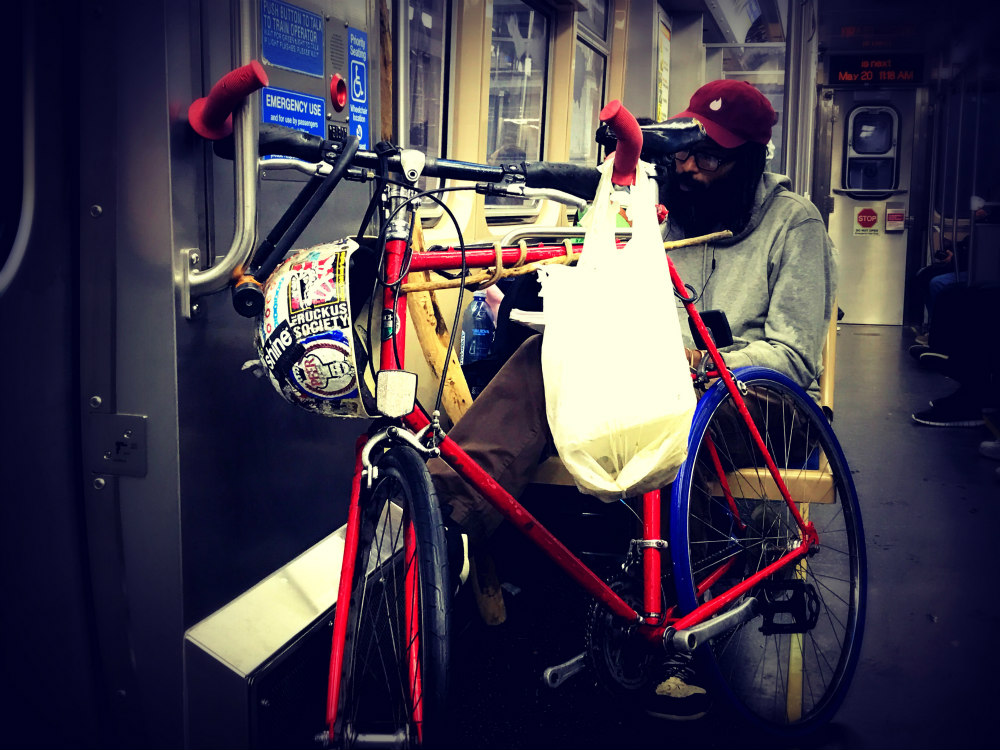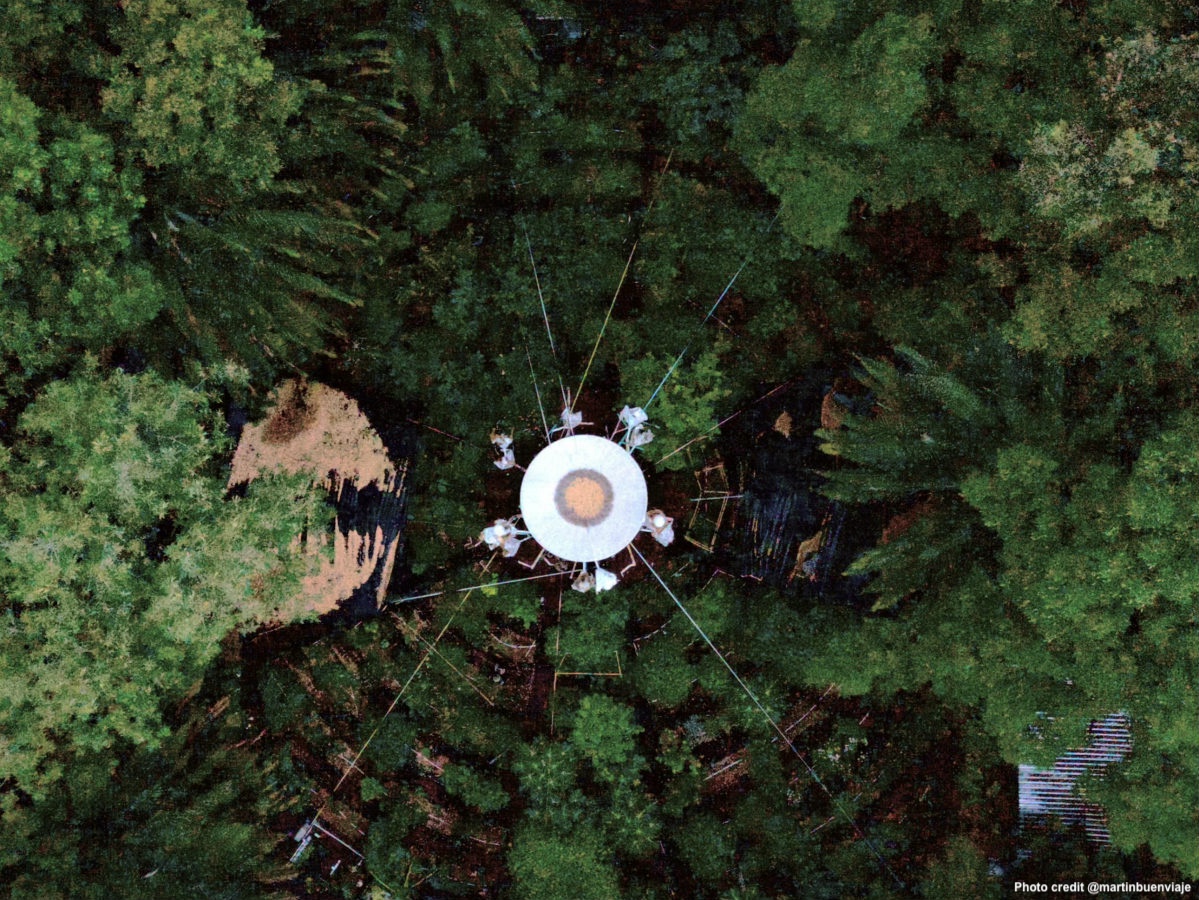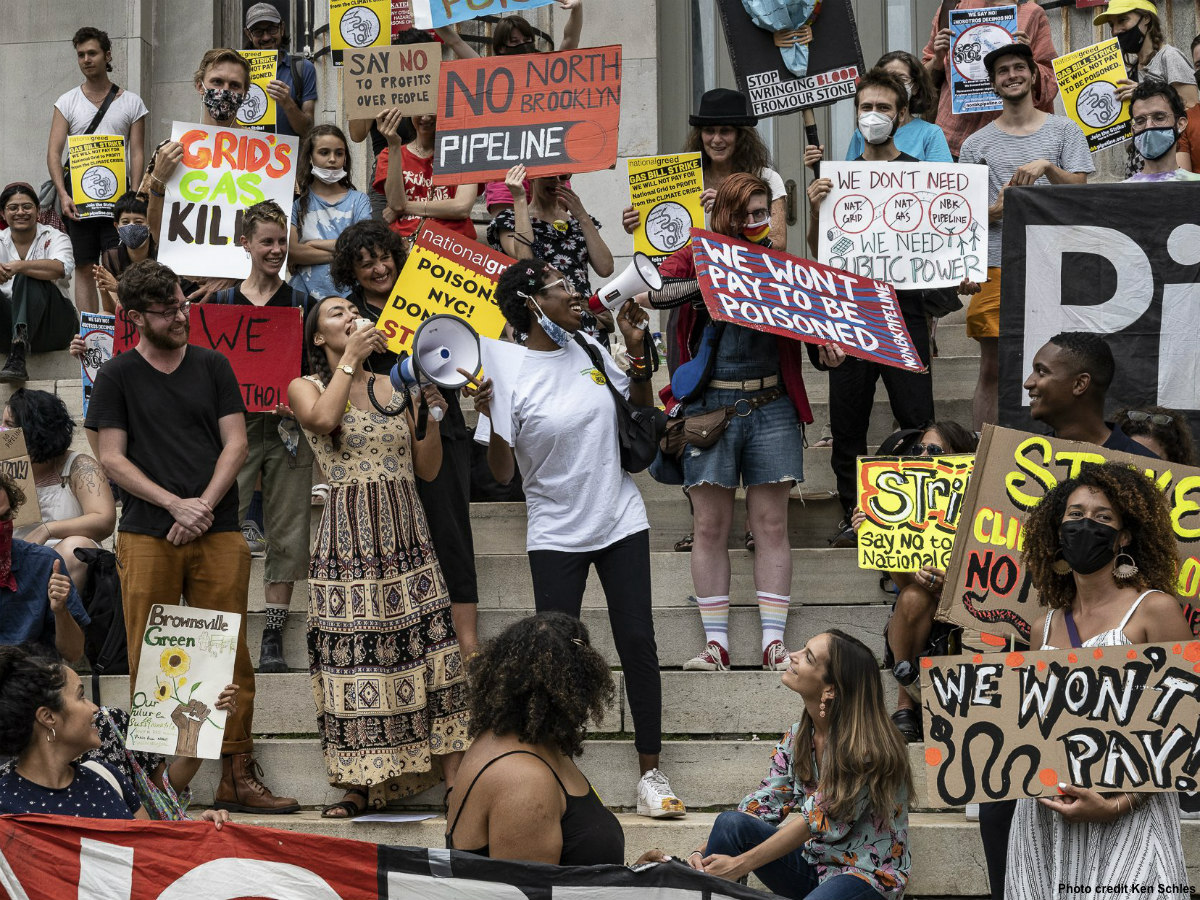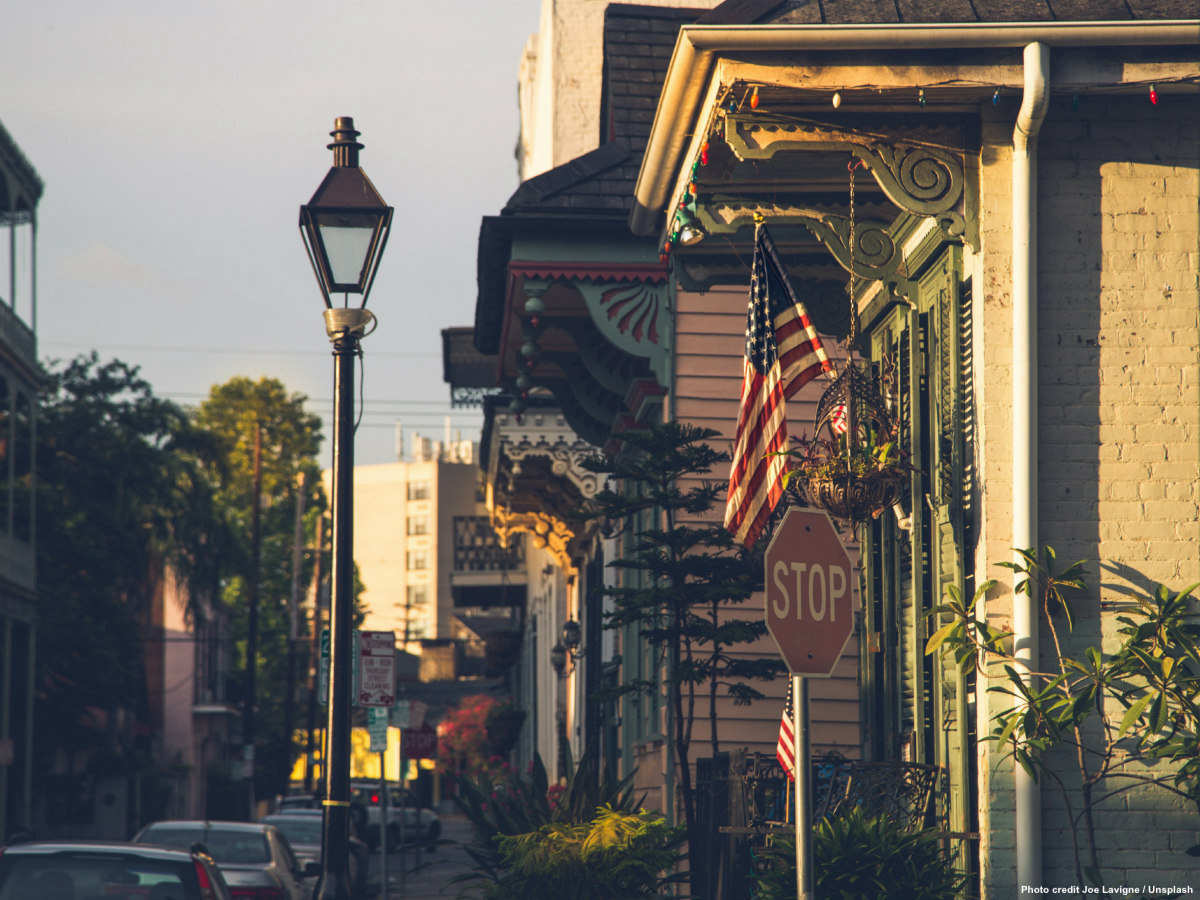Last Monday, January 20th people across US cities participated in parades honouring the legacy of Dr. Martin Luther King, Jr. in the so-called MLK Day marking his birthday. His legacy has been inspiring city advocates of colour to fight for more equitable US cities and racial equity in urban planning. Their movements claim people’s right to the city focusing on justice, immigration, affordable housing and basically the issue of people of colour not being able to access the same things that white people have.
As US cities worldwide are figuring out how to move towards more liveable and sustainable cities, civil bike movements have been also sprouting out in cities to encourage sustainable mobility and less cars.
Worrying about climate change, in 2008 Adonia Lugo, a cultural anthropologist from Los Angeles, was so inspired by the project Ciclovía in Bogota, that she was convinced to do a similar event in Los Angeles. In 2010 CicLAvia came to Los Angeles and it was the first car free event in the city and proved to be very successful.
This experience was part of her PhD dissertation about sustainable urban transportation. By being in contact with various bike associations and cycling advocates, she started realizing that the discussion about mobility was always around the big mistake made in the past of building cities for cars.
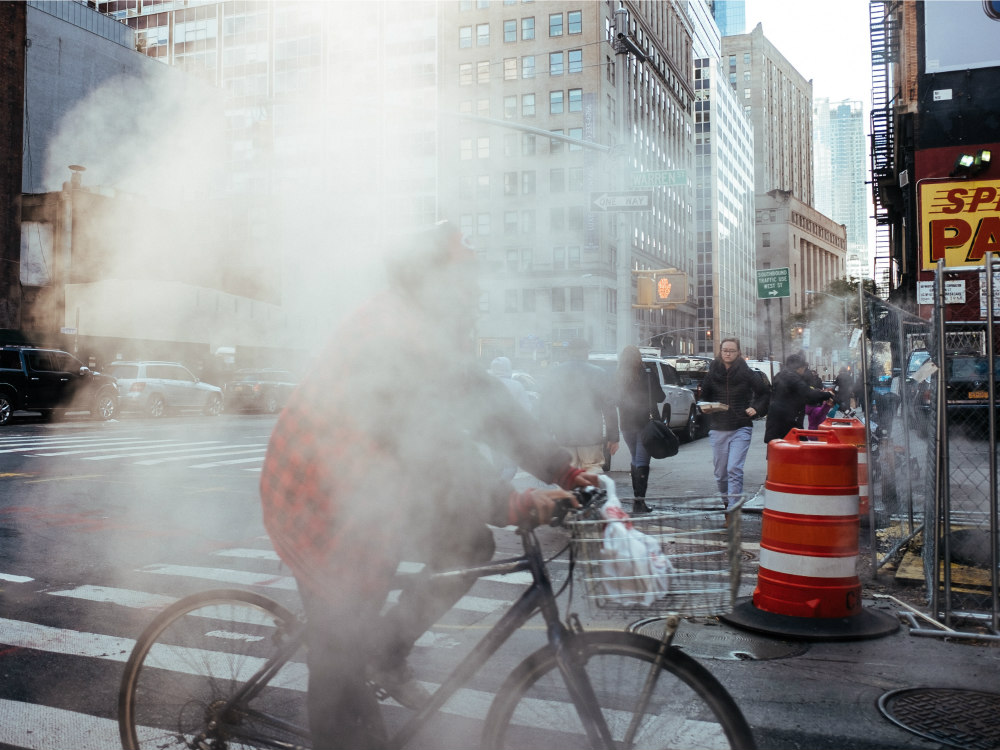
Similarly, she noticed that, at a time when more public resources, than ever before, were going toward sustainable or active transportation infrastructure projects, these investments weren’t being guided by the many people of colour out there using bicycles as a mobility solution.
‘Despite the fact that most cyclists and people using transit are working-class folks, over and over I’ve been asked to participate in conversations that start with, ‘how do we get more low-income people biking and walking?’‘ wonders Lugo.
‘The focus of the discussion is always on the built environment, thus in order to make cities sustainable, it means we have to change it. But this explanation seems very simplistic to me. I believe, in the case of some US cities, a more interdisciplinary research is required’.
Adonia Lugo currently teaches in the Urban Sustainability MA program at Antioch University Los Angeles. She is also the founder of People for Mobility Justice, an organisation which advocates consciousness around mobility justice. She is a bike justice advocate.
It struck me that although many organizations were promoting cycling in Los Angeles, none of them had a prospective focus on those other human rights movements tackling social problems with an influence in people’s mobility. It was too one-sided for me, purely relying on planning and infrastructure.
In 2014, she came out with the concept of mobility justice. And since then she has been working on how these other social issues like discrimination based on race or class impact urban travel and how mobility justice is regulated within transportation equity policy and racial equity accommodated in urban planning accordingly.
More over, Adonia Lugo’s work goes beyond mobility justice. She has also founded the organization Untokening, a multiracial collective that centres on the lived experiences of marginalized communities to address mobility justice. Lugo speaks of ‘human infrastructure’, the need for diverse social networks to promote sustainable transformation in cities. Basically, urban planning just can’t happen without people of colour in the room and city officials should not assume either that all people of colour have the same priorities.
To understand mobility, you have to understand history
There is a strong connection between history and mobility in US cities due to the effect of segregation. City planning used to put limits to move people from some parts of the city to others creating historical inequalities. In US cities the embedded influence of structural racism, for instance in city planning, has been affecting the urban lives of people of colour until today; from the human right to mobility to other rights such as good air quality.
Vibrant black neighbourhoods became in some cases inner-ring neighbourhoods cut off by highways crossing through them with the consequence of a tearful loss of transit, parks, and air quality and a negative impact in their local economies and safety on their streets.
Due to interpersonal violence or police violence, we cannot pretend that people of colour in cities from Los Angeles to Chicago have the freedom and resources to move with dignity in public spaces and feel safe without a car, explains Olantuji Oboi Reed.
In Chicago Reed co-founded Slow Roll Chicago, an organization to create a transformative bicycle culture, in other words, using the bike as a vehicle for social change. They have been local pioneers.
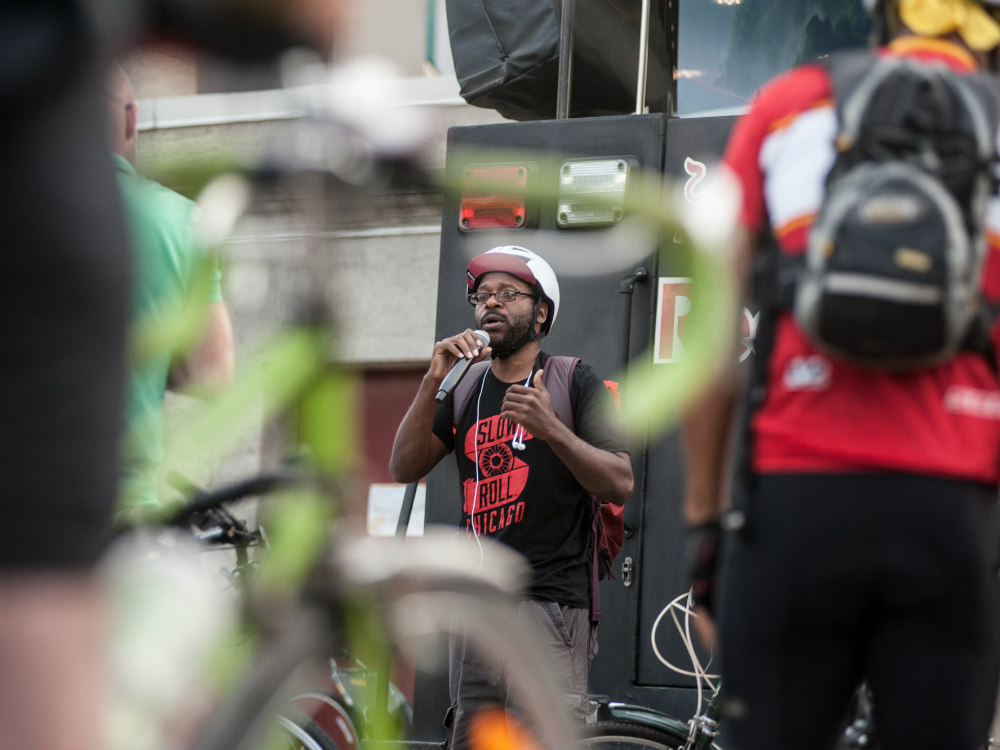
He was born and raised in Chicago and used to work for big corporations in the Social Responsibility field. While battling depression, he started to ride an old bike to keep staying mentally healthy. He realized that the freedom provided by his bike to connect to nature and people was a transformative power. He realized that bikes could bring about change in the South and West Sides of Chicago, mostly inhabited by people of colour.
Through weekly group rides along these neighbourhoods, Slow Roll Chicago addresses issues of violence, health and other socioeconomic disparities. As a result, Slow Roll has even worked with Divvy, the Mayor’s office and the Chicago Department of Transportation.
I started to mobilize people, who didn’t feel safe on the streets due to violence and traffic. Sometimes even if it is a safe street, there is a perceptive violence that serves as a barrier. It’s not only a matter to combat violence but it is the perception of it that makes you feel unsafe. The public space works when people have this notion of trust and ownership.
Reed, inspired by Lugo’s organization Untokening, has founded Equiticity and has become an advocator of racial equity in urban planning and in a broader sense across sectors beyond bikes. He has stepped back from his role at Slow Roll Chicago.
‘Racial equity is the fair, just distribution of resources, explicitly targeting and prioritizing racial groups who have the greatest need due to being systematically disenfranchised and using these resources to address both historical and contemporary injustices and their consequential burdens’.
Fixing the planning and decision-making process in cities
More equitable cities start with untokening the way governments and organizations, working for cities, make decisions.
‘Racial equity demands a public commitment to intentional diversity and radical inclusion within our society and its institutions. It dictates the respect and empowerment of local innovators and local community leaders as national leaders, highlighting, elevating, energizing and investing in the transformative work being done at the neighbourhood level, respecting this wisdom and expertise, and valuing their central role in creating authentic, relevant, and sustainable solutions to address problems at all levels in our society’.
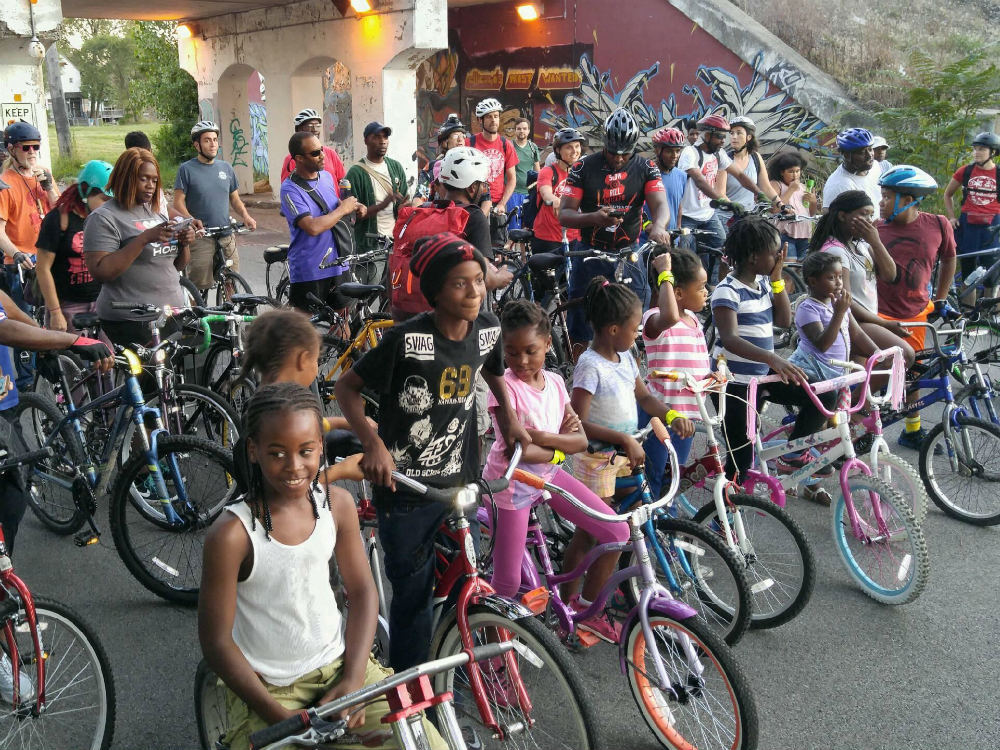
‘Our primary audience is Black and Brown people. We want to improve our urban lives. We want to see Brown and Black people in the leadership of traditionally white led environmental organizations, city administrations, transportation advocacy coalitions, you name it. When organizations are genuinely committed to racial equity, and diversity and inclusion, they must empower people of colour to have a voice and the internal power to achieve the racially equitable outcomes and solutions we seek in urban planning, transportation, and all aspects of the city. Black and Brown people have to own those solutions as well’, explains Reed.
As cities worldwide are rethinking their approach to cars and other issues towards more liveable and sustainable cities, US cities are often trying to emulate European cities exceptional mobility models. However, advocates like Lugo and Reed claim that “Copenhagenize” US cities could lead to exacerbate racial inequality if the black indigenous people collective is not part of the process. Issues of gentrification and urban inequity would be also a consequence as some of those neighbourhoods of colour are ironically being rediscovered.
‘In this advocacy model, the problem isn’t the overall framework of top-down planning and engineering of public space; the problem is that white men with cars were at the centre of the 20th century approach, explains Adonia Lugo.
In US cities the use of the bike and the activity of cycling has become a symbol for social justice and social change. In fact, it proves that discussions about getting more liveable car-free cities are much more complex.
To make the urban planning process more inclusive, policymakers, urban planners and decision-making stakeholders should not only find better ways to engage communities of colour, but rather let them own the process.
In Dr. Martin Luther King, Jr’s words: ‘It is not possible to be in favour of justice for some people and not be in favour of justice for all people’.
